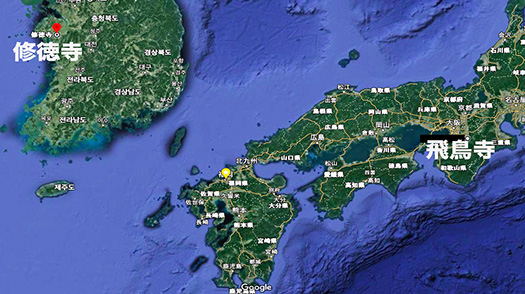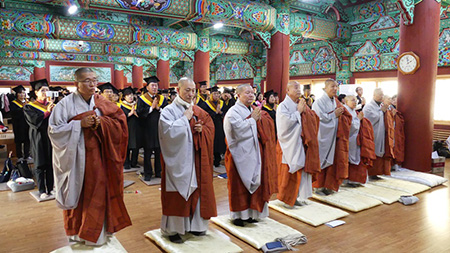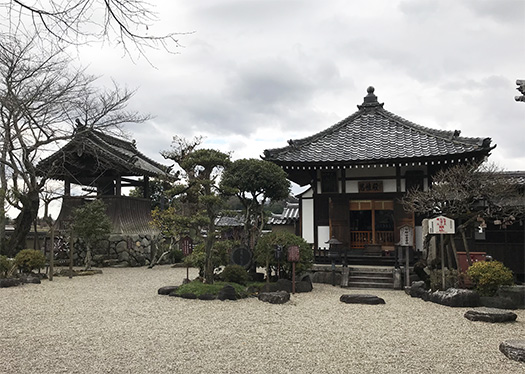


韓国・修徳寺創建は384年。
そこを起点として日本に仏教が導入され、飛鳥寺創建587年。
四天王寺創建593年、そして法隆寺創建は605年と考えられている。
この時期の日本は仏教導入期として矢継ぎ早にこれら寺院が建設されている。
きのうも書きましたが、日本最古の「工務店」金剛組が現代にも存続している。
この金剛組は四天王寺建築に際して朝鮮・韓国から渡来した。
「組」という総合技術企業の表現にふさわしい名前も導入されたのかも知れない。
十分に漢字も導入されていない時代にあって、金剛という名も
なにがしかの消息を現代にまで伝えているのかも知れません。
剛い金属のように強靱な建築を建てますよ、というメッセージは示唆的。
日本には縄文時代の三内丸山から弥生の吉野ヶ里、
そして歴史年代の出雲大社神殿などを造営する「木造技術」が存在した。
列島内で活発にそれらが交流を重ねていたことは間違いがない。
時代をやや下って奈良期には首都建設のために国内諸国が応分の
負担をしたけれど飛騨国は経済基盤に乏しく、首都造営の人足・技術者を供出した。
かれらが現場工事を始めたらたちまちに「飛騨の匠」の評価が定まったとされる。
木の国である飛騨国において木造建築技術が発展していたことが歴史で確認できる。
そういった基盤があった日本社会に仏教という、政治統治上も有用で
「鎮護国家」思想として統一権力を列島に根付かせる役割を担った宗教が
大陸・半島から日本社会に一気に導入された。
構造という部分ではすでに高層な出雲神殿を作る技術力は存在した。
しかし仏教建築としてのデザイン面では「見たこともない」ものだったろう。
なんといっても重量物である瓦をびっしりと屋根に敷き並べて
いかにも「これが権威だ」みたいな主張を建築として表現している。
日本ではあまり採用されなかったけれど、基壇として床上げが重厚に施されている。
屋根端部は反りを見せて跳ね上がるほどに仕上げられていて
男性がひげを反り返らせて威張るのに似た雰囲気のようでもある。
(この反りの加減はより強い中国建築と比べて日本は緩やか目)
そして内部ではなるべく大空間ができるように架構に工夫がされている。
なにより建築の用途として特定の思想を表現するという
人間生活の営為とは違う建築目的の驚きが技術者達にはあっただろう。
「本尊」という建築と随伴した彫刻工芸技術が目的の核心にある、
という建築営為のまったく新奇性もまたかれらを刺激した。
そしてその建築群がまるでラッシュのように公共工事として発注され
その工事に朝鮮韓国からまで職人たちが結集してきた。
未曾有の工事ラッシュの中で、建築技術的にも相当の進化が相互に促進された。
先述の「飛騨の匠」という尊称はこうした競争の勝利者へのリスペクトかも。
こういった建築技術者たちの切磋琢磨が次の時代の東大寺、
そして全国の「国分寺・国分尼寺」建設へと引き継がれて
列島全域に高度な建築技術が普及していったのだろうことも論を待たない。
English version⬇
[Introduction route for Buddhism and architectural design: Japan’s first temple, Asuka-dera-5]
Sudeoksa Temple was founded in 384 years in South Korea.
Buddhism was introduced to Japan from that point, and Asuka-dera was founded in 587.
It is believed that Shitennoji was founded in 593, and Horyuji was founded in 605.
In Japan during this period, these temples were built in rapid succession as the introduction of Buddhism.
As I wrote yesterday, Japan’s oldest “construction shop” Kongo Gumi still exists today.
This Kongo Gumi came from Korea and South Korea for the construction of Shitennoji Temple.
It may be that a name suitable for the expression of a comprehensive technology company called “gumi” was also introduced.
In an era when Chinese characters were not fully introduced, the name Kongo was also known.
It may be telling some news to the present day.
The message that we will build a building that is as strong as hard metal is suggestive.
In Japan, from Sannai Maruyama in the Jomon period to Yoshinogari in Yayoi,
And there was “wooden technology” to build the Izumo Taisha shrine in the historical period.
There is no doubt that they were actively interacting within the archipelago.
A little later in the era, domestic countries are appropriate for the construction of the capital in the Nara period.
Although it was a burden, Hida Province lacked an economic base and provided human resources and engineers for the construction of the capital.
It is said that the evaluation of “Hida Takumi” was decided as soon as they started the on-site construction.
It can be confirmed in history that wooden construction technology was developed in Hida, a country of wood.
Buddhism in Japanese society, which had such a foundation, is also useful for political governance.
A religion that played a role in rooting unified power in the archipelago as a “guardian state” idea
It was introduced into Japanese society from the continent and peninsula at once.
In terms of structure, there was already the technical ability to build a high-rise Izumo temple.
However, in terms of design as Buddhist architecture, it must have been “never seen”.
After all, heavy roof tiles are lined up on the roof.
It expresses the claim that “this is authority” as architecture.
Although it was not widely adopted in Japan, the floor is heavily raised as a base.
The roof edge is finished so that it shows warpage and jumps up
It’s also like a man’s beard curling up and intimidating.
(This warp is moderate in Japan compared to stronger Chinese architecture)
And the frame is devised so that as large a space as possible can be created inside.
Above all, expressing a specific idea as an architectural use
Engineers would have been surprised that the purpose of construction was different from the basic activities of human life.
At the core of the purpose is the sculpture craft technique that accompanies the architecture of “honzon”.
The total novelty of the building business would have stimulated them.
And the buildings were ordered as public works like a rush
Craftsmen from Korea and South Korea have gathered for the construction.
In the unprecedented construction rush, considerable evolution in building technology was mutually promoted.
The honorific title of “Takumi Hida” mentioned above may be a respect for the winner of such competition.
The competition between these building engineers will be the next era of Todaiji Temple.
And it was taken over to the construction of “Kokubunji / Kokubunnanji” nationwide.
It is no wonder that advanced building technology has spread throughout the archipelago.
Posted on 10月 18th, 2021 by 三木 奎吾
Filed under: 住宅マーケティング, 住宅性能・設備, 歴史探訪







コメントを投稿
「※誹謗中傷や、悪意のある書き込み、営利目的などのコメントを防ぐために、投稿された全てのコメントは一時的に保留されますのでご了承ください。」
You must be logged in to post a comment.